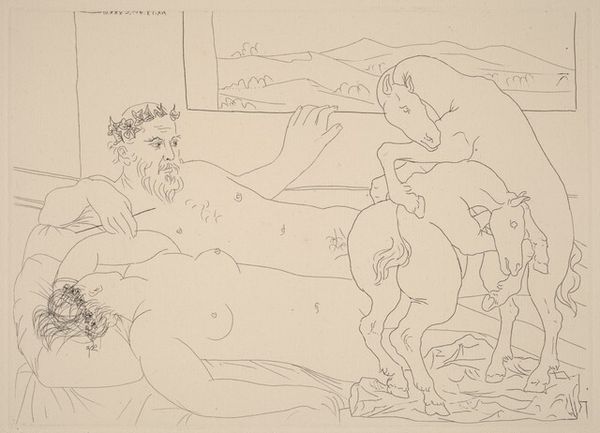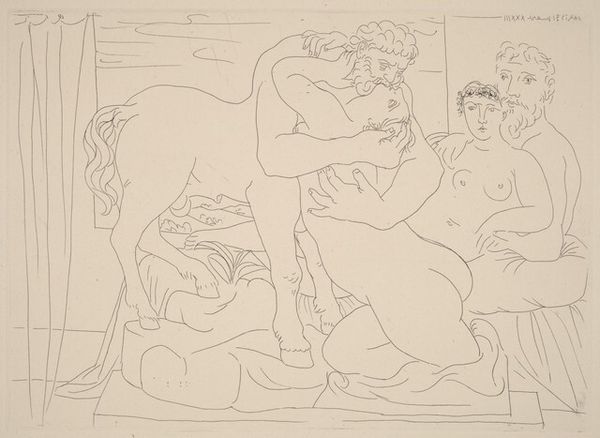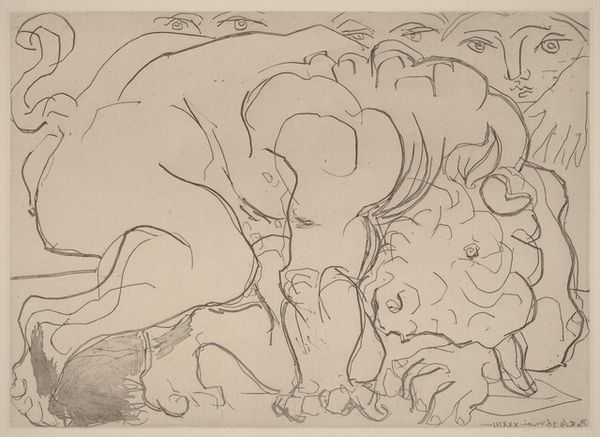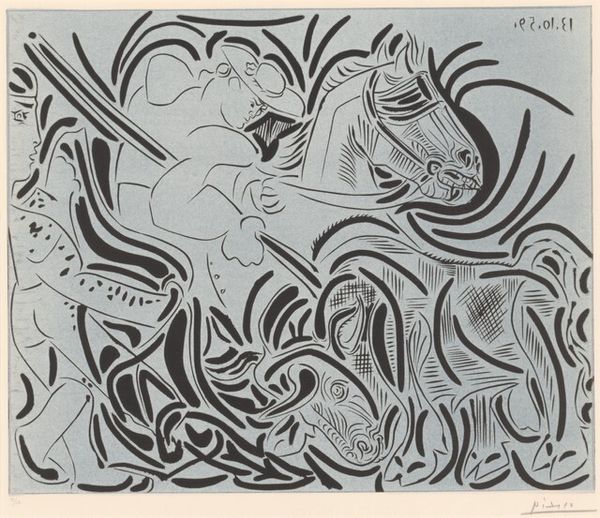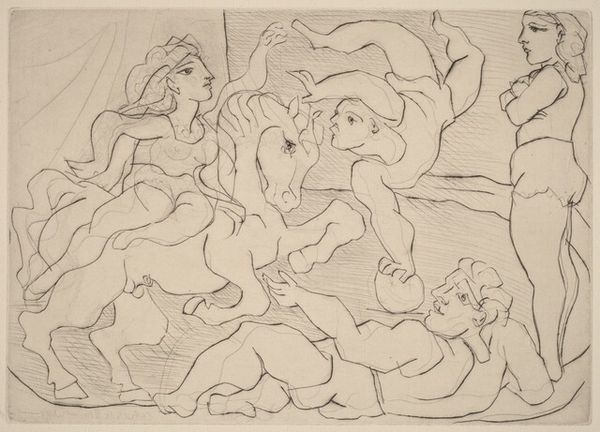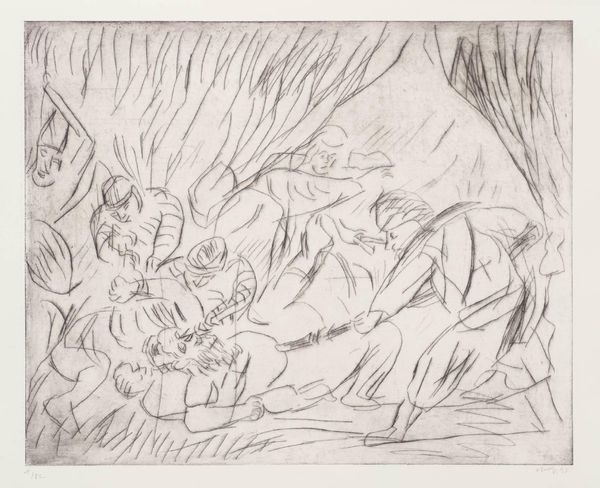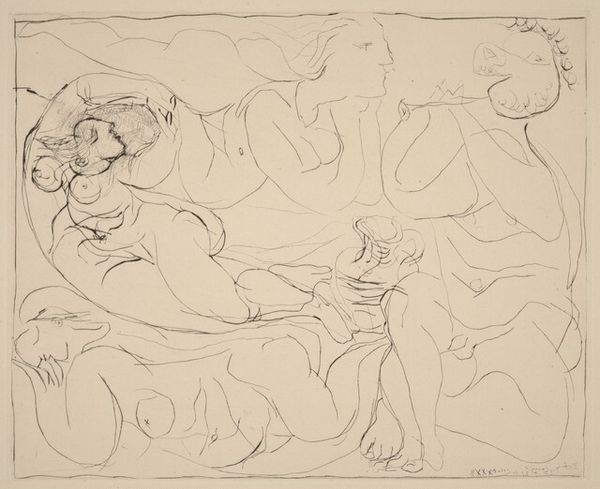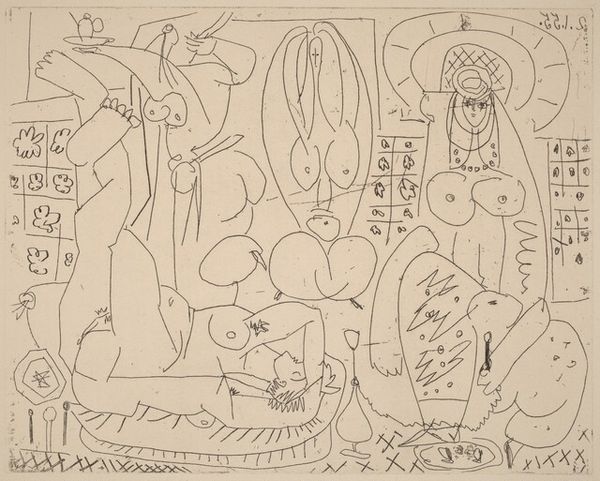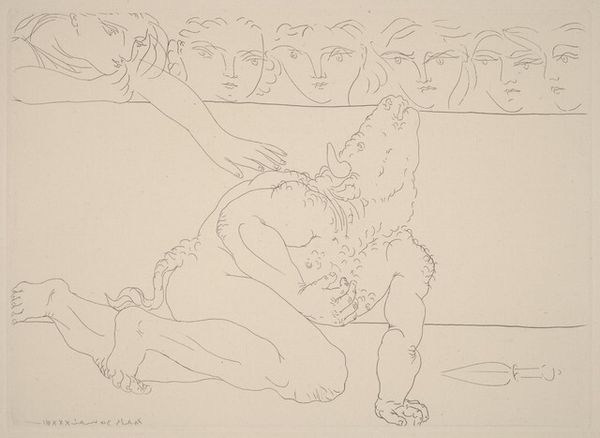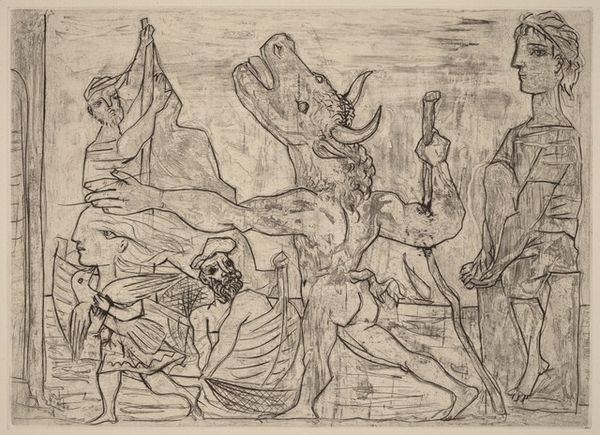
Sculptor and Model with a Sculpture Representing a Bull Attacking Horses (Sculpteur et son modèle avec un groupe sculpté représentant un taureau attaquant des chevaux) 1933
0:00
0:00
drawing, print, etching
#
portrait
#
drawing
#
neoclassicism
# print
#
etching
#
figuration
#
history-painting
#
academic-art
Dimensions: plate: 19.4 x 26.8 cm (7 5/8 x 10 9/16 in.) sheet: 38.4 x 50.3 cm (15 1/8 x 19 13/16 in.)
Copyright: National Gallery of Art: CC0 1.0
Curator: The piece before us is entitled, "Sculptor and Model with a Sculpture Representing a Bull Attacking Horses" completed in 1933 by Pablo Picasso. The etching exemplifies Picasso’s explorations into neoclassical themes during this period. What strikes you initially? Editor: Utter chaos rendered with incredible calm. The bull versus horses sculpture writhes with energy, and right beside it we have this impossibly serene scene of a sculptor gazing at his sleeping model. The contrast is jarring but also, strangely captivating. Curator: The composition relies heavily on line, doesn't it? Note how the etched lines delineate form, creating a dynamic interplay between the interior scene and the sculptural drama. The perspective feels deliberately flattened, compressing the spatial relationships. Editor: Yes, flattened but somehow not lifeless. Look at the lines that form the bull—muscular, tense. You can almost hear the snorting. Then those delicate lines outlining the model. She seems completely oblivious, wrapped in some pre-violent dream. What do you make of the sculptor's laurel wreath? A nod to classical art, a crown for artistic accomplishment, or…something else? Curator: The laurel certainly positions the sculptor within the classical tradition. It may be seen as a claim to authority. Also note the motif of the bull attacking horses. Picasso would return to themes of violence repeatedly throughout his career; the dynamic violence portrayed here can be related to contemporary socio-political unrest of Europe in the 1930s. Editor: Exactly! Everything in the frame is at odds: the still and the turbulent, the real and the sculpted, peace and…imminent disaster. And here is Picasso showing it all to us at once, a pressure cooker before it explodes. Knowing what was coming, what he must have felt. You feel the tension crackling off the etching. Curator: A poignant reading. It illustrates perfectly the potential of combining formal analysis and intuition to deepen our appreciation of a work of art. Editor: I feel as though the key here is to approach works like this one through their contrasts. Sometimes meaning resides between things that should or could connect—but don’t.
Comments
No comments
Be the first to comment and join the conversation on the ultimate creative platform.
